11 Must-Read Books on Sales for Freelance Writers
As a freelance writer, your success depends not just on your writing skills but also on your ability to sell your services and negotiate effectively with clients. This curated list of 11 books on sales for freelance writers will transform how you approach client relationships, pitch your services, and close deals that reflect your true value.
1. To Sell Is Human by Daniel H. Pink
In a world where the word “sales” conjures images of pushy used car salesmen, Daniel H. Pink’s “To Sell Is Human” offers a radical reimagining of what selling truly means. For freelance writers, this book isn’t just about closing deals—it’s about fundamentally understanding how we communicate, persuade, and create value in an increasingly complex professional landscape.
The New Sales Landscape
Pink begins by challenging our traditional understanding of sales. Gone are the days when selling was a narrow profession confined to specific roles. Today, we’re all constantly selling—pitching ideas, convincing colleagues, persuading clients. For freelance writers, this means every interaction is a potential opportunity to demonstrate value.
Entrepreneurial Writing in the Modern Economy
The book reveals a profound shift in how we approach work. As a freelance writer, you’re not just selling a service, but selling yourself as a solution, a strategic partner, and a creative problem solver. Your writing isn’t a commodity—it’s a transformative tool that helps businesses communicate, connect, and grow.
Imagine positioning yourself not as a writer-for-hire, but as a communication strategist who happens to use words as your primary instrument. This subtle reframing changes everything about how potential clients perceive your value.
The ABC of Modern Selling: Attunement, Buoyancy, and Clarity
Pink introduces a powerful framework that goes far beyond traditional sales techniques. For freelance writers, these principles are game-changing approaches to client relationships.
Attunement: The Art of Perspective-Taking
Attunement is about stepping outside your own perspective and truly understanding your client’s world. It’s more than active listening—it’s a deep empathetic practice that allows you to anticipate needs before they’re even articulated.
When meeting with a potential client, your goal is to become a mirror that reflects their challenges, aspirations, and unique communication needs. This means extensive research, asking profound questions, and demonstrating that you understand their business at a cellular level.
Buoyancy: Resilience in the Face of Rejection
Freelance writing can be a rollercoaster of emotions. Pink’s concept of buoyancy is about maintaining optimism and resilience, especially when faced with rejection. It’s not about never feeling discouraged, but about developing the mental flexibility to bounce back quickly.
Consider reframing rejections as valuable feedback. When a potential client doesn’t hire you, it’s an opportunity to understand why. Are there gaps in your communication? Could you have better demonstrated your unique value? Buoyancy transforms setbacks into learning experiences.
Clarity: Helping Clients See What They Couldn’t See Before
In a world drowning in information, the ability to provide crystal-clear perspective is invaluable. As a freelance writer, your job isn’t just to write—it’s to help clients see their challenges and opportunities with newfound clarity.
This means developing the skill to distill complex ideas into compelling narratives. Can you take a client’s jumbled thoughts and transform them into a clear, powerful message? Can you help them understand their own story in a way they couldn’t before?
The Pitch Reimagined
Pink challenges traditional pitch approaches. Instead of a one-way monologue, modern pitching is a collaborative exploration. For freelance writers, this means creating conversations that feel like joint problem-solving sessions.
Try approaching client meetings with genuine curiosity. Instead of preparing a rigid presentation, come with thoughtful questions that help both you and the client discover the most effective communication strategy.
Adding Real Value
A revolutionary aspect of Pink’s book is the concept of “servant selling“—an approach where the primary goal is to genuinely help the other person. For freelance writers, this means looking beyond the immediate project to understand the client’s broader goals.
Your writing should be a vehicle for their success. Are you helping them attract leads? Build thought leadership? Clarify their brand message? The more precisely you can articulate the tangible value you provide, the more attractive you become as a partner.
The Improviser’s Mindset
Drawing from improvisation techniques, Pink suggests that great selling requires flexibility, quick thinking, and the ability to build on others’ ideas. As a freelance writer, this means being adaptable, responsive, and creative in your approach to client needs.
Practice saying “yes, and…” instead of “no” or “but”. When a client suggests an approach, find ways to build on their ideas rather than immediately pushing back. This collaborative spirit creates trust and demonstrates your strategic thinking.
Ethical Persuasion in a Complex World
Pink emphasizes that modern selling isn’t about manipulation, but about genuine value creation. Your goal as a freelance writer is to help clients communicate more effectively, solve real problems, and achieve their most ambitious objectives.
Transforming Your Professional Narrative
“To Sell Is Human” offers more than sales strategies—it provides a holistic approach to professional communication. By embracing these principles, you transform from a service provider into an indispensable strategic partner.
Your words are your greatest asset. Learn to sell them not as a commodity, but as a transformative tool that can change businesses, inspire audiences, and create meaningful connections.
2. Never Split the Difference by Chris Voss
As a former FBI hostage negotiator, Chris Voss shares powerful negotiation tactics that freelance writers can apply in their client discussions. Never Split the Difference teaches the art of tactical empathy, mirroring, and “no-oriented” questions to gain control in negotiations. Voss’s techniques empower freelancers to confidently negotiate rates and manage challenging conversations, especially with clients who push back on price or scope.
Voss’s FBI negotiation techniques translate surprisingly well to freelance writing scenarios. His approach focuses on emotional intelligence and strategic communication.
Imagine walking into every client meeting with the confidence of a world-class negotiator, equipped with psychological insights that transform how you communicate, price your services, and close deals. Chris Voss’s “Never Split the Difference” isn’t just a negotiation book—it’s a masterclass in human communication that can revolutionize a freelance writing career.
The FBI Negotiator’s Unexpected Wisdom
Chris Voss brings a unique perspective from his years as a top FBI hostage negotiator. While most books about negotiation focus on rational strategies, Voss reveals a deeper truth: communication is fundamentally emotional, and understanding those emotions is the key to successful negotiations.
For freelance writers, this means moving beyond transactional conversations about rates and deliverables. Your negotiation starts the moment you first connect with a potential client, and it’s about so much more than just money.
Tactical Empathy: Your Superpower
The cornerstone of Voss’s approach is “tactical empathy“—a profound way of listening that goes far beyond surface-level understanding. It’s about creating a genuine connection that makes clients feel truly heard and understood.
Imagine a potential client discussing their content challenges. Instead of immediately jumping to how you can solve their problem, first demonstrate that you’ve completely absorbed their perspective. Use mirroring techniques—subtly repeating their last few words as a question—to show you’re deeply engaging with their concerns.
The Power of Calibrated Questions
Voss introduces the concept of “calibrated questions” – strategically crafted queries that give you critical information while making the other person feel in control. For freelance writers, this means replacing statements like “Here’s my rate” with questions like “How were you planning to approach this project’s budget?”
These questions accomplish multiple things simultaneously: they gather crucial information, make the client feel respected, and position you as a strategic partner rather than a service provider.
Decoding Emotional Negotiations
Most freelance writers approach pricing as a purely rational exercise. Voss reveals that decisions are primarily emotional, with rational justification added afterward. Your job isn’t to present the most logical argument, but to create an emotional experience that makes working with you feel like the right choice.
When a client pushes back on your rates, don’t defend yourself. Instead, use techniques like labeling—verbally acknowledging their underlying emotions. “It sounds like you’re concerned about getting the right value for your investment” demonstrates that you’re listening at a deeper level.
The Accusation Audit: Defusing Potential Resistance
One of the book’s most powerful techniques is the “accusation audit“—preemptively addressing potential client concerns before they’re voiced. For a freelance writer, this might mean saying something like, “I know it might seem like my rates are higher than what you’re expecting…”
By acknowledging potential objections upfront, you disarm resistance and create space for a more collaborative conversation. You’re showing that you understand their perspective and are committed to finding a mutually beneficial solution.
Negotiating Beyond the Numbers
Voss emphasizes that great negotiation isn’t about winning, but about creating an outcome where both parties feel they’ve gained something valuable. For freelance writers, this means looking beyond the immediate project to build long-term relationships.
Your goal isn’t just to close a single writing contract, but to position yourself as an indispensable strategic partner. This might mean occasionally providing extra value, offering insights that go beyond the written deliverable, or being flexible in ways that demonstrate your commitment.
The “No” That Opens Doors
Counterintuitively, Voss suggests that getting to “no” can be more powerful than pushing for “yes”. In freelance writing, this means creating scenarios where clients feel comfortable expressing their true concerns.
A client who says “no” is actually giving you valuable information. They’re telling you about their fears, constraints, and real priorities. Your job is to listen, adapt, and show how you can address those underlying concerns.
Practical Application for Freelance Writers
Implementing these strategies isn’t about becoming a manipulative negotiator. It’s about developing a more nuanced, empathetic approach to communication. Start small—practice active listening, develop your emotional intelligence, and focus on creating genuine connections.
Record your client conversations (with permission). Analyze them to understand where you can apply these techniques. Every interaction is an opportunity to refine your approach.
The Ethical Negotiator
Voss is clear that true negotiation isn’t about manipulation, but about creating mutual understanding. As a freelance writer, your goal is to help clients articulate their needs, feel heard, and find the most effective solution.
Transforming Your Professional Narrative
“Never Split the Difference” offers more than negotiation tactics. It provides a comprehensive framework for understanding human communication. By applying these principles, you transform from a service provider into a strategic partner clients are eager to work with.
Your words have power—not just in the content you write, but in how you communicate your own value. Master these negotiation strategies, and watch your freelance writing business reach new heights.
3. The Psychology of Selling by Brian Tracy
In The Psychology of Selling, Tracy explores the mental barriers that prevent many people from achieving sales success. His advice on building self-confidence and handling rejection is particularly useful for freelancers facing a competitive market. This book will help you develop a resilient mindset and master the art of selling your services without feeling overwhelmed or discouraged by setbacks.
The Inner Game of Sales
Tracy fundamentally reframes selling as a skill that can be learned and mastered, not an innate talent reserved for a select few. For freelance writers, this is incredibly empowering. Your ability to win clients, negotiate rates, and build a thriving business isn’t determined by some mysterious charisma, but by understanding key psychological principles and deliberately practicing them.
Self-Concept: Your Most Powerful Sales Tool
One of the book’s most transformative insights is the critical role of self-perception. How you view yourself directly impacts how potential clients perceive you. A freelance writer who sees themselves as a valuable strategic partner will communicate entirely differently from one who views themselves as just another service provider.
Imagine walking into a client meeting radiating confidence, not from ego, but from a genuine understanding of the unique value you bring. Your self-belief becomes a magnetic force that attracts ideal clients and commands respect.
The Goal-Oriented Approach to Sales
Tracy emphasizes that effective selling is about systematically understanding and addressing client needs. For freelance writers, this means moving beyond generic pitches to developing a laser-focused approach that demonstrates deep understanding of each client’s specific challenges and objectives.
Your sales conversations should feel less like a pitch and more like a collaborative problem-solving session. Instead of talking about your writing skills, discuss the specific ways your content can drive the client’s business forward.
Understanding Client Psychology
The heart of Tracy’s methodology lies in comprehending the emotional and rational drivers behind client decisions. People buy for complex, multilayered reasons that extend far beyond simple transactional needs.
A potential client isn’t just hiring a writer; they’re seeking a solution to broader business challenges. They want content that attracts leads, establishes thought leadership, improves search rankings, or communicates their brand’s unique value proposition. Your job is to show that you understand these deeper motivations.
The Trust Equation
Trust is the foundational currency of any successful sales relationship. Tracy provides nuanced strategies for building rapid, genuine trust with potential clients. This goes beyond mere pleasantries—it’s about demonstrating competence, reliability, and authentic commitment to the client’s success.
For freelance writers, building trust might involve:
- Sharing relevant industry insights during initial conversations
- Providing specific, actionable recommendations even before being hired
- Maintaining transparent, consistent communication
- Delivering work that consistently exceeds expectations
Overcoming Objections Masterfully
Most freelance writers dread client objections, particularly around pricing. Tracy reframes objections as opportunities for deeper connection and value demonstration. When a client says your rates are high, they’re not rejecting you—they’re asking you to clarify your unique value proposition.
This means developing the skill to transform price conversations into discussions about return on investment. Can you show how your writing generates measurable business outcomes? Can you illustrate the potential revenue lost by choosing an inferior writer?
The Strategic Sales Process
Tracy outlines a systematic approach to sales that freelance writers can adapt:
Preparation is paramount. Before any client interaction, research thoroughly. Understand their industry, recent challenges, competitive landscape, and communication style. The more precisely you can speak to their specific context, the more likely you are to win their business.
Your initial conversations should be more about listening than talking. Ask probing questions that reveal the client’s deeper needs, fears, and aspirations. Your goal is to position yourself as a strategic partner who happens to write, not just a writer looking for work.
Continuous Learning and Adaptation
One of the most powerful messages in “The Psychology of Selling” is the importance of continuous improvement. Treat each client interaction as a learning opportunity. Reflect on what worked, what didn’t, and how you can refine your approach.
Keep a sales journal. Track your conversations, note client responses, and analyze your most successful pitches. Over time, you’ll develop an intuitive understanding of what resonates with different types of clients.
The Ethical Dimension of Selling
Tracy emphasizes that true sales mastery isn’t about manipulation, but about genuine value creation. As a freelance writer, your ultimate goal is to help clients communicate more effectively, solve business challenges, and achieve their objectives.
Transforming Your Sales Mindset
“The Psychology of Selling” is more than a book about closing deals. It’s a comprehensive guide to understanding human motivation, building genuine connections, and positioning yourself as an indispensable partner in your clients’ success.
Your writing isn’t just a service—it’s a strategic tool that can help businesses grow, connect with audiences, and achieve their most ambitious goals. Embrace this perspective, and watch your freelance writing business transform.
4. Pitch Anything by Oren Klaff
Klaff’s book introduces a structured approach to pitching that helps you capture and hold a client’s attention. He delves into the psychology of how people make decisions and why traditional pitches fail to engage. With Klaff’s “STRONG” method, freelance writers can craft pitches that stand out and close deals faster by creating an emotional connection and framing their value as indispensable to the client’s goals.
In the high-stakes world of freelance writing, your ability to pitch can make or break your career. Oren Klaff’s “Pitch Anything” offers a revolutionary approach to presentations that goes far beyond traditional sales techniques, providing freelance writers with a psychological blueprint for capturing attention and winning business.
The Psychology of Pitching: More Than Just Words
Klaff introduces a fundamental truth that changes everything about how we approach client presentations: pitching is a psychological game, not just a information-sharing exercise. As a freelance writer, your goal isn’t to overwhelm potential clients with facts, but to create a compelling narrative that triggers their deepest decision-making instincts.
Frames: The Invisible Battle of Communication
At the heart of Klaff’s methodology is the concept of “frames” – psychological lenses through which we interpret information. In freelance writing, this means understanding that every client interaction is a subtle battle of perspective. The person who can control the frame controls the conversation.
Imagine walking into a client meeting. The traditional approach might be to position yourself as a supplicant, hoping to be chosen. Klaff suggests the opposite: enter with a frame that positions you as a valuable expert whose time and expertise are in high demand. This subtle shift can transform how clients perceive your value.
The Croc Brain: Speaking to Primitive Decision-Making
Klaff reveals that our most primitive brain region—the crocodile brain—makes most initial decisions. This part of the brain is survival-focused and responds to very specific types of communication. It’s easily bored, suspicious of complex information, and primarily interested in potential threats or exciting opportunities.
For freelance writers, this means your pitch needs to be concise, exciting, and immediately engaging. Forget long-winded explanations about your writing process. Instead, craft a narrative that triggers curiosity and excitement within the first few moments of interaction.
The Method: STRONG Framework
Klaff develops a pitch method that aligns perfectly with how our brains actually process information:
Setting the Frame: Establish control of the conversation by positioning yourself as the expert. This isn’t about arrogance, but confident expertise.
Tell a Story: Humans are wired for narratives. Your pitch should be a compelling story that demonstrates your unique approach and value.
Reveal the Intrigue: Create a sense of mystery and excitement around your potential collaboration. Make clients curious about what you can do.
Offer the Prize: Position yourself as the solution they didn’t know they needed. Your writing services aren’t just a transaction, but a transformative opportunity.
Nail the Hookpoint: Find the moment of maximum interest and drive your point home with precision.
Get a Decision: Create a clear path to commitment that feels natural and exciting.
Handling Resistance: The Art of Smooth Negotiation
Klaff provides powerful strategies for overcoming objections that freelance writers commonly face. Instead of becoming defensive when a client raises concerns, use these moments as opportunities to demonstrate your understanding and expertise.
When a potential client says your rates are too high, don’t immediately discount yourself. Instead, reframe the conversation around the value you bring. Show how your writing can solve specific business problems, generate revenue, or create competitive advantages.
Social Dynamics and Status
A critical insight from the book is understanding social dynamics. Clients are often looking for more than just a writer—they’re seeking a partner who understands their business at a deeper level. Your communication should reflect a peer-to-peer relationship, not a subservient one.
This means researching your clients thoroughly, speaking their language, and demonstrating that you’re not just a service provider, but a strategic collaborator who brings unique insights.
Practical Magic: Turning Theory into Action
For freelance writers, implementing Klaff’s approach isn’t about memorizing a script. It’s about fundamentally shifting how you view client interactions. Your pitch is a performance, a carefully crafted experience that engages the client’s emotions and intellect.
Practice telling your professional story in a way that’s concise, exciting, and reveals your unique value. Focus on creating moments of intrigue that make clients lean forward and want to know more.
The Ethical Dimension
While the book provides powerful psychological tools, Klaff emphasizes that true persuasion is about genuine value creation. As a freelance writer, your goal is to demonstrate how your skills can solve real problems and create meaningful outcomes for your clients.
Your New Pitching Mindset
“Pitch Anything” isn’t just a book about selling—it’s a manual for understanding human communication. By applying these principles, you transform from a writer looking for work to a strategic partner clients actively seek out.
Your pitch is your first impression, your story, and your value proposition—all wrapped into one powerful moment of connection.
5. Influence: The Psychology of Persuasion by Robert Cialdini
A classic in the field of persuasion, Influence covers six principles that drive people to say “yes.” Cialdini’s principles—such as reciprocity, commitment, and authority—can help freelance writers subtly influence clients. Applying these strategies can be as simple as showcasing testimonials (social proof) or emphasizing scarcity in your availability, making your services more attractive.
Imagine having a secret weapon that could transform how you communicate, negotiate, and ultimately close deals in your freelance business. Robert Cialdini’s groundbreaking book “Influence” is exactly that—a deep dive into the psychological principles that drive human decision-making, packed with insights that can revolutionize how freelance writers approach sales and client interactions.
The Six Principles of Influence
At the heart of Cialdini’s work are six fundamental psychological triggers that prompt people to say “yes” – and understanding these can be a game-changer for freelancers looking to elevate their business.
Reciprocity: The Power of Giving First
We’re hardwired to repay what someone else has given us. For freelance writers, this means providing value upfront can create a powerful sense of obligation. Think about offering a potential client a free consultation, a detailed content outline, or an insightful industry report. By generously sharing your expertise before asking for anything in return, you’re more likely to create a positive predisposition toward working with you.
Imagine sending a prospective client a custom content strategy that solves a specific problem they’re facing. Even if they don’t immediately hire you, you’ve planted a seed of goodwill and demonstrated your expertise. When they’re ready to invest in writing services, you’ll be top of mind.
Commitment and Consistency: Small Steps Lead to Big Agreements
Humans have a deep psychological drive to remain consistent with their previous actions. For freelancers, this means creating opportunities for clients to make small commitments that gradually lead to larger ones. Start with a small project or a mini-consultation that allows potential clients to experience your value without a massive financial or time investment.
A freelance writer might offer a low-stakes initial service like a website copy audit or a content strategy session. Once a client experiences your expertise and sees tangible value, they’re more likely to commit to larger, more comprehensive projects.
Social Proof: The Comfort of Following the Crowd
We look to others to determine appropriate behavior, especially in uncertain situations. For freelance writers, this translates into strategically showcasing testimonials, case studies, and success stories. Your potential clients want to know that others have successfully worked with you and achieved remarkable results.
Consider creating a portfolio that doesn’t just display writing samples, but tells stories of how your work drove real business outcomes for previous clients. Highlight metrics, transformative results, and direct quotes that demonstrate your impact.
Liking: The Attraction of Similarity and Rapport
People are more likely to be influenced by those they know, like, and trust. As a freelance writer, your personal brand and communication style are crucial. Find ways to establish genuine connections with potential clients by discovering shared interests, demonstrating authentic empathy, and communicating in a relatable manner.
During initial consultations, focus on building rapport. Ask thoughtful questions about their business, show genuine interest in their challenges, and find common ground. The more a client feels you understand their world, the more likely they are to choose you.
Authority: Leveraging Expertise and Credibility
We’re programmed to respect and follow expert advice. For freelance writers, this means deliberately positioning yourself as an authority in your niche. This doesn’t mean being boastful, but strategically showcasing your expertise through thought leadership content, speaking engagements, published articles, and professional credentials.
Consider starting a blog, creating educational content on platforms like LinkedIn, or speaking at industry conferences. These activities subtly communicate your expertise without feeling like aggressive self-promotion.
Scarcity: The Allure of Limited Opportunities
People place higher value on things that are rare or perceived as difficult to obtain. In freelance writing, this could mean creating a sense of exclusivity around your services. This doesn’t mean fabricating false limitations, but genuinely communicating the unique value and limited availability of your expertise.
You might offer a limited number of comprehensive strategy sessions each month or create packages with specific capacity constraints. This approach communicates that your time and expertise are precious and not infinitely available.
Ethical Persuasion: A Freelancer’s North Star
While these principles are powerful, Cialdini emphasizes the critical importance of using them ethically. Your goal isn’t manipulation, but genuine value creation. True influence stems from authentically helping clients solve their problems and achieve their goals.
As a freelance writer, view these psychological principles as tools for clearer communication and more meaningful client relationships. They’re about creating mutual understanding and demonstrating your unique value, not exploiting human vulnerabilities.
Practical Application: Your Persuasion Toolkit
Integrating these principles doesn’t require a complete personality overhaul. Start small: Refine your communication strategy, be more intentional about how you present your services, and focus on creating genuine value.
Remember, persuasion is an art of connection. By understanding these psychological triggers, you’re not just selling writing services—you’re building trust, solving problems, and creating transformative partnerships.
6. Gap Selling by Keenan
If you’ve ever felt stuck in conversations about your rates or found yourself competing on price, Keenan’s “Gap Selling” might just revolutionize how you approach selling your writing services. At its core, this book introduces a profound shift in how we should think about sales – and it’s particularly relevant for freelance writers who want to move beyond the commodity trap.
The Problem with Traditional Selling
Let’s start with what most of us do wrong. We jump into conversations about our writing services, our experience, our process, and our rates. Sound familiar? Keenan argues that this approach is completely backward. Why? Because we’re selling solutions to problems we don’t fully understand yet.
Understanding the Gap
The heart of Keenan’s methodology is understanding that sales happen in the gap between a client’s current state and their desired future state. But here’s the key insight: Most clients don’t actually understand this gap themselves. They might think they need blog posts or white papers, but that’s just their perceived solution to a problem they haven’t fully articulated.
Think about it this way: When a client says they need website copy, they’re not really asking for words on a page. They’re trying to solve a business problem – maybe they’re losing customers due to poor messaging, or they’re entering a new market and need to establish credibility. Your job is to uncover the real problem before you ever talk about solutions.
The Power of Problem-Centric Selling
Here’s where Keenan’s approach gets really interesting for writers. Instead of leading with your writing capabilities, you start by becoming an expert in understanding problems. This means asking probing questions that help clients see their challenges in new ways:
“What’s preventing you from reaching your target market?” “How is your current content affecting your sales process?” “What happens if these communication issues aren’t resolved?”
The magic happens when you help clients discover problems they didn’t even know they had. Suddenly, you’re not just another writer – you’re a problem-solving consultant who happens to use writing as your tool.
The Future State: More Than Just Deliverables
One of Keenan’s most powerful insights is about the importance of future state. It’s not enough to understand the current problems – you need to help clients envision a compelling future that your services can help create.
For writers, this means painting a vivid picture:
- What does success look like for their business?
- How will better content change their market position?
- What impact will effective communication have on their bottom line?
- How will their day-to-day operations improve?
When you help clients see this gap between their current struggles and potential future success, price becomes less of an issue. They’re no longer buying writing – they’re investing in transformation.
The Impact Question Framework
Keenan introduces a brilliant framework for understanding the full scope of business problems. For writers, this means diving into:
Technical Impact: How are current content issues affecting their systems and processes? Business Impact: What’s the effect on their market position and revenue? Personal Impact: How are these challenges affecting key stakeholders personally?
By understanding impacts at all these levels, you can create proposals that speak to everyone involved in the decision-making process.
Moving Through the Sales Process
Here’s where Gap Selling really shines. Instead of the traditional “show up and throw up” approach of pitching your services, Keenan outlines a structured process:
- Problem Discovery: Understand the current state and its impacts
- Problem Impact: Quantify the cost of the status quo
- Future State: Create a compelling vision of success
- Gap Analysis: Show how your writing services bridge the gap
- Solution Configuration: Design a package that solves the real problem
The Art of Discovery
The book places enormous emphasis on the discovery phase, and for good reason. This is where you differentiate yourself from every other writer who’s simply taking orders. Your goal in discovery isn’t to gather requirements – it’s to help clients see their situation in a new light.
Some powerful discovery questions for writers: “What prompted you to look for a writer now?” “What happens if you don’t solve this communication challenge?” “How is your current content affecting your sales cycle?” “What would it mean to your business if you could clearly communicate your value proposition?”
Quantifying the Gap
Here’s something most writers never do: Put numbers to the problem. Keenan insists that understanding and quantifying the cost of the current state is crucial. For writing services, this might mean:
- Lost sales due to unclear messaging
- Wasted marketing spend on ineffective content
- Time spent by internal teams trying to create content
- Opportunity cost of delayed market entry
- Customer churn due to poor communication
When you can put real numbers to these problems, your rates suddenly seem like a bargain in comparison.
Handling Price Objections
One of the most valuable aspects of Gap Selling is how it changes price conversations. When clients understand the true cost of their problems and the value of solving them, price objections naturally diminish. Instead of defending your rates, you can point back to the gap between where they are and where they want to be.
Making It Work in Your Business
Implementing Gap Selling as a freelance writer requires some adjustments to your current approach:
- Revamp your discovery process to focus on problem exploration
- Develop questions that uncover business impacts
- Learn to quantify the cost of poor communication
- Practice painting compelling future states
- Structure your proposals around transformation, not deliverables
The Mindset Shift
Perhaps the biggest takeaway from “Gap Selling” is the mindset shift it requires. You’re not selling writing services – you’re selling the journey from a problematic current state to a successful future state. Your writing is simply the vehicle that gets clients there.
This approach requires more upfront work. You need to:
- Become an expert in business problems
- Develop strong diagnostic skills
- Learn to ask uncomfortable questions
- Get comfortable talking about money and impact
- Position yourself as a strategic advisor
But the payoff is tremendous. When you master Gap Selling, you stop competing on price and start selling on value. Clients see you as a strategic partner rather than a vendor. And most importantly, you deliver better results because you’re solving real problems, not just fulfilling orders.
Remember, every time a client asks for a quote, they’re really asking for help bridging a gap. Your job is to understand that gap so well that your service becomes the obvious solution.
7. The Challenger Sale by Matthew Dixon and Brent Adamson
You know that feeling when you’re on a client call, and you find yourself nodding along with everything they say, even when you know there might be a better approach? Well, “The Challenger Sale” by Matthew Dixon and Brent Adamson turns this common freelance behavior completely on its head. Their research reveals something fascinating: The most successful salespeople aren’t the relationship builders we might expect – they’re the challengers who bring new perspectives to their clients.
Forget Everything You Know About “Building Relationships”
Here’s the bombshell that Dixon and Adamson drop early in the book: Being nice, building relationships, and always saying yes to client requests isn’t actually the best way to win and keep clients. In fact, their research shows that “Relationship Builders” typically underperform compared to “Challengers” – professionals who aren’t afraid to push back and teach their clients something new.
This might feel uncomfortable at first. After all, as freelance writers, we’re often taught to be accommodating and flexible. But think about the clients you most respect – aren’t they the ones who challenge your thinking and bring new perspectives to the table?
The Three Core Elements of the Challenger Approach
The Challenger model is built on three key abilities that we can adapt to our freelance writing businesses:
Teach: Bring new insights and perspectives to your clients about their business Tailor: Adapt your message to resonate with different stakeholders Take Control: Guide the conversation and maintain a healthy tension
Let’s break these down and see how they apply to freelance writing.
Teaching for Differentiation
Here’s where things get interesting. Instead of just asking clients what they want and delivering it, the Challenger approach involves teaching them something they don’t already know about their business. As writers, we’re in a unique position to do this because we often have exposure to multiple industries and can bring cross-pollinated insights.
For example, instead of simply agreeing to write blog posts, you might say something like: “I’ve noticed that companies in your industry are all creating similar content. But based on what I’ve seen in other sectors, there’s an opportunity to stand out by focusing on [specific approach]. Let me explain why this could be transformative for your business…”
Tailoring Your Message
The book emphasizes the importance of understanding your client’s business so well that you can connect your insights directly to their specific situation. This isn’t about generic industry knowledge – it’s about understanding the unique pressures and opportunities your client faces.
As writers, we can use this principle to craft more compelling proposals and conversations. Instead of talking about writing deliverables, we discuss business outcomes. Instead of focusing on word counts, we talk about market positioning and competitive advantage.
Taking Control of the Conversation
This might be the most challenging aspect for many writers to embrace. Taking control doesn’t mean being aggressive or pushy – it means confidently leading the conversation toward the best solution, even if that’s different from what the client initially requested.
For instance, if a client says they want a weekly blog post, a Challenger writer might respond: “Help me understand what you’re trying to achieve with these posts. I’ve seen companies waste significant resources on content that doesn’t serve their business goals. Let’s talk about what success looks like for you, and then we can design the most effective content strategy.”
The Commercial Teaching Pitch
One of the most valuable concepts in the book is the commercial teaching pitch. This is a structured way to present insights that lead clients to your solution. For writers, it might look something like this:
- Start with a trend or challenge in their industry
- Show how most companies are responding (usually ineffectively)
- Reveal the hidden costs or missed opportunities in these common approaches
- Introduce a better way (your approach)
- Show how your writing services uniquely deliver on this better way
Reframing Value
The Challenger approach fundamentally changes how we present our value as writers. Instead of competing on quality, speed, or price, we compete on insight and expertise. This shifts the conversation from “How much do you charge per word?” to “How can we use content to achieve your business objectives?”
Building Constructive Tension
Here’s a concept that might feel uncomfortable: The book argues that a certain amount of tension in the sales process is actually healthy. It creates engagement and demonstrates expertise. For writers, this might mean:
- Challenging assumptions about what type of content will be most effective
- Pushing back on requests that won’t serve the client’s goals
- Presenting unexpected solutions that might initially create discomfort
- Being willing to walk away from opportunities that aren’t a good fit
The Power of Consensus
One fascinating finding from the research is that in complex B2B sales (which high-end freelance writing often is), the number of stakeholders involved in the decision has increased dramatically. This means we need to be able to build consensus across different departments and decision-makers.
As writers, this might mean developing different value propositions for:
- Marketing managers focused on content metrics
- Sales teams interested in lead generation
- C-suite executives concerned with brand positioning
- Subject matter experts worried about technical accuracy
Making It Work in Your Business
Implementing the Challenger approach as a freelance writer doesn’t happen overnight. Start by:
- Developing unique insights about your clients’ industries
- Creating teaching presentations that showcase these insights
- Practicing the art of constructive disagreement
- Building your confidence in leading client conversations
- Focusing on business outcomes rather than writing deliverables
The Mindset Shift
Perhaps the most important takeaway from “The Challenger Sale” is the mindset shift it requires. You’re not just a writer for hire – you’re a trusted advisor who brings valuable insights and isn’t afraid to challenge conventional wisdom when it serves the client’s best interests.
This approach requires more upfront work. You need to stay current with industry trends, develop unique perspectives, and be prepared to defend your viewpoints. But the payoff is significant: higher rates, more respected relationships, and the satisfaction of truly helping your clients succeed.
Remember, being a Challenger doesn’t mean being confrontational. It means caring enough about your clients’ success to push back when necessary and bring new insights to the table. When you combine this with strong writing skills, you become not just a service provider, but a valuable strategic partner.
The next time you’re tempted to simply agree with everything a prospect says, remember: They’re not looking for another yes-person. They’re looking for someone who can help them see their challenges in a new light and guide them toward better solutions. That’s what being a Challenger is all about.
8. Fanatical Prospecting by Jeb Blount
Let’s talk about the part of freelance writing that most of us dread: finding new clients. If you’ve ever sat at your desk, staring at an empty pipeline and wondering where your next project will come from, Jeb Blount’s “Fanatical Prospecting” might just be the game-changer you need. While it’s written for traditional salespeople, its principles are incredibly powerful for freelance writers looking to build a steady stream of clients.
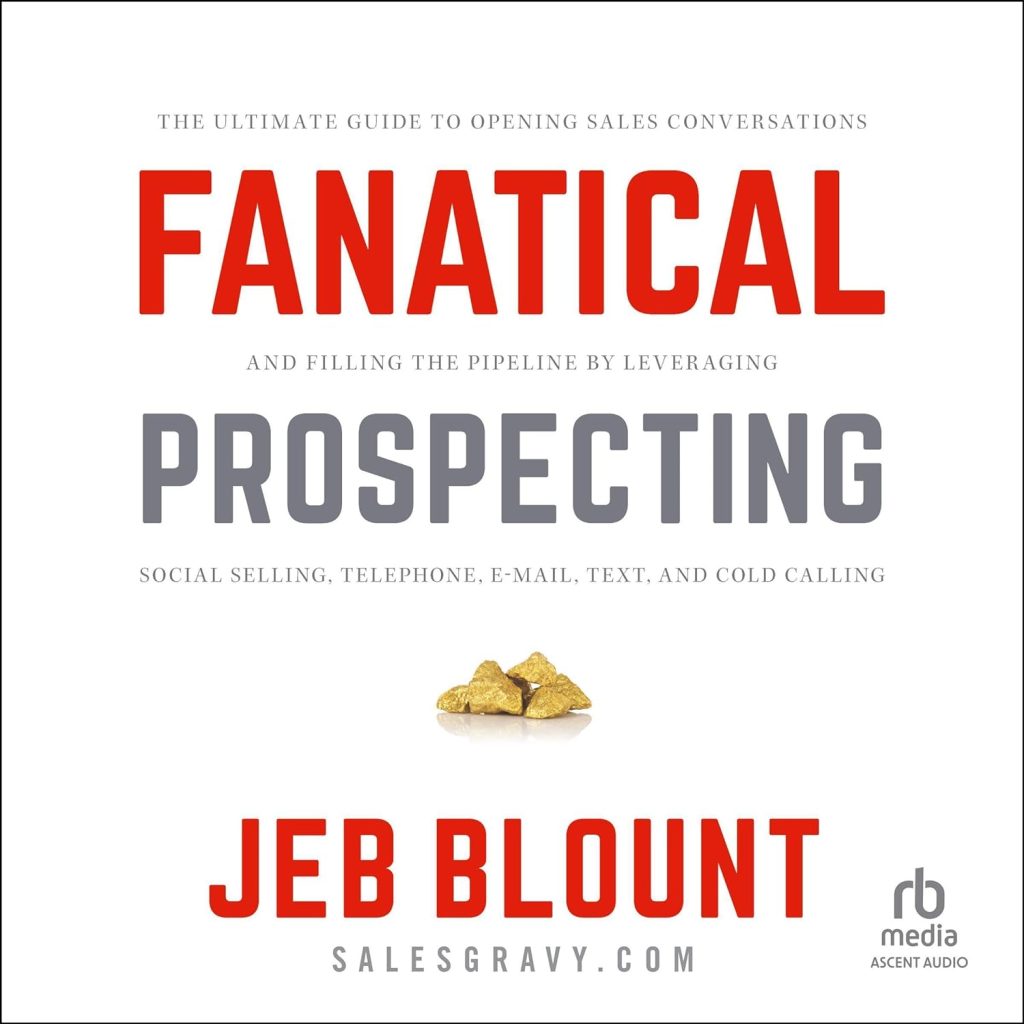
The Brutal Truth About Finding Clients
Here’s the reality that Blount hits us with right away: There’s no magic bullet for finding clients. No perfect email template, no secret LinkedIn strategy, no mystical referral system that will do the hard work for us. The only way to consistently land new clients is through consistent prospecting.
This might sound discouraging at first, but there’s actually something liberating about it. Once you accept that prospecting is simply part of running a successful freelance business, you can stop searching for shortcuts and start building sustainable habits.
The 30-Day Rule
One of the most powerful concepts in the book is what Blount calls the “30-Day Rule.” Here’s the deal: The prospecting you do today won’t pay off immediately. Instead, it creates opportunities that typically materialize about 30 days later. This explains why many freelancers get stuck in the feast-or-famine cycle.
Think about it: When you’re busy with projects, you stop prospecting. Then, when those projects end, your pipeline is empty because you haven’t been planting seeds for the future. Understanding this time lag helps you maintain consistent prospecting efforts, even when you’re swamped with work.
The Three P’s: Prospecting, Pipeline, and Productivity
Blount introduces what he calls the “Three P’s” that drive success in finding new opportunities. For freelance writers, this translates into:
Prospecting: Your daily activities to find and connect with potential clients
Pipeline: Your system for tracking and nurturing opportunities
Productivity: Your ability to manage time and energy effectively
The key is balancing all three. Great prospecting without a solid pipeline means losing opportunities. A full pipeline without productivity means dropping the ball on follow-up. It’s all connected.
The Power of Multiple Channels
Here’s something that might change your approach: Blount strongly advocates for using multiple prospecting channels simultaneously. As writers, we often get stuck in one method – maybe cold emailing or LinkedIn outreach. But mixing channels increases your chances of success and helps you find what works best for your particular niche.
This might mean combining:
- Direct outreach via email
- Social media engagement
- LinkedIn networking
- Referral requests
- Content marketing
- Speaking or teaching opportunities
- Partnership development
The goal isn’t to do everything, but to find a mix that works for you and your ideal clients.
Overcoming Call Reluctance
While Blount focuses heavily on phone calls, for writers, this principle applies to any form of outreach. That knot in your stomach before sending a pitch? The hesitation before reaching out to a dream client? That’s call reluctance, and it’s normal.
The solution isn’t to wait until you feel confident. It’s to acknowledge the discomfort and do it anyway. Blount emphasizes that even the most successful professionals feel this resistance – they just don’t let it stop them.
Time Blocking for Success
One of the most practical takeaways from the book is the importance of time blocking for prospecting. Instead of waiting for inspiration or free time, schedule specific blocks for outreach activities. Make these blocks sacred, just like you would a client deadline.
For writers, this might mean dedicating the first hour of each day to prospecting activities, regardless of how busy you are with current projects. It’s about treating business development with the same professionalism you bring to your writing.
The Rule of Satisfaction
Here’s an interesting psychological insight from the book: The more satisfied you are with your current situation, the less likely you are to prospect effectively. This explains why many writers only get serious about finding clients when they’re desperate – which is exactly the wrong time to prospect.
The solution? Set prospecting goals based on the business you want, not the business you have. This keeps you hungry and proactive, even when things are going well.
Leveraging Your Writing Skills
As writers, we have a unique advantage in prospecting that Blount doesn’t specifically address: We can use our writing skills to stand out.
Every email, social post, or piece of content we create showcases our abilities. This doesn’t mean we should write lengthy pitches – in fact, Blount advocates for brevity and clarity – but it does mean we should craft our outreach with the same care we bring to client work.
Building Sustainable Habits
The real magic of “Fanatical Prospecting” isn’t in any single technique – it’s in the mindset shift it creates. Prospecting isn’t something you do when you need work; it’s something you do consistently to build a sustainable business.
This means:
- Setting daily or weekly prospecting goals
- Tracking your activities and results
- Continuously refining your approach
- Building systems to support consistent outreach
- Maintaining momentum even when business is good
Making It Work for You
The key to applying these principles as a freelance writer is to adapt them to your personality and market. Maybe cold calling isn’t your thing, but you excel at creating valuable content that attracts clients. Great – make that a key part of your prospecting mix, but don’t use it as an excuse to avoid direct outreach entirely.
Remember, the goal isn’t to become a aggressive salesperson. It’s to consistently connect with potential clients who need your services. When you approach prospecting with professionalism and genuine interest in helping others succeed, it becomes less about “selling” and more about building relationships that can lead to meaningful work.
Start small. Block out 30 minutes tomorrow morning for prospecting activities. Reach out to one potential client. Share one valuable insight on LinkedIn. The key is consistency, not perfection. Over time, these small actions compound into a steady stream of opportunities.
Because here’s the truth: The best writing in the world won’t help you build a successful freelance business if no one knows you exist. Fanatical prospecting ensures that never happens.
9. $100M Offers by Alex Hormozi
Let’s talk about something that could completely transform your freelance writing business. Alex Hormozi’s “$100M Offers” isn’t just another business book – it’s a complete reimagining of how we should think about packaging and selling our services. While Hormozi built his empire in the fitness industry, the principles he shares are pure gold for freelance writers looking to escape the commodity trap.
The Grand Value Problem
Here’s a situation you might recognize: You’re an excellent writer, you work hard, you deliver quality work… yet somehow you’re still struggling to command the rates you know you deserve. According to Hormozi, this isn’t because you’re not good enough – it’s because you’re thinking about value all wrong.
The book’s core premise is deceptively simple: The size of your income is directly proportional to the value you deliver to your clients. But here’s where it gets interesting: value isn’t just about what you do; it’s about how you package and present what you do. This is where most of us writers have been getting it wrong.
The Value Equation
Hormozi introduces what he calls the Value Equation: Value = Magnitude of Problem × Likelihood of Achievement ÷ Time Delay × Effort & Sacrifice
Let’s break this down in writer terms. Say you’re offering blog posts. The magnitude of the problem might be your client’s need for more traffic and leads. The likelihood of achievement is your track record of delivering results. Time delay is how quickly you can turn around quality work. Effort and sacrifice represent how easy you make the process for your client.
But here’s the kicker: most writers focus solely on deliverables (the blog posts themselves) rather than the transformation these posts enable. Hormozi would say we’re selling the wrong thing entirely.
Building Your Grand Slam Offer
This is where things get exciting. Instead of selling writing services, Hormozi would encourage us to create what he calls a Grand Slam Offer. This isn’t just about bundling services – it’s about engineering an offer that feels like a no-brainer to your ideal clients.
Start by identifying your client’s dream outcome. Maybe it’s not just getting blog posts – it’s achieving thought leadership in their industry, generating qualified leads, or becoming the go-to resource in their niche. Then, think about every possible obstacle standing between them and that outcome. Your offer should systematically eliminate each of these obstacles.
The Power of Value Stacking
One of the book’s most powerful concepts is value stacking. Instead of simply offering writing services, you create layers of value that make your offer irresistible.
For a content package, this might look like:
Base Service: High-quality blog posts +Plus: SEO optimization +Plus: Social media snippets +Plus: Email newsletter versions +Plus: Content promotion strategy +Plus: Monthly performance reports
Each additional layer increases the perceived value exponentially while often requiring minimal additional effort from you. The key is choosing add-ons that enhance the core transformation your clients want.
Price Anchoring and Risk Reversal
Hormozi spends considerable time discussing pricing psychology. Instead of starting with what you want to charge, start with the value you’re creating. If your content package can help a business generate $100,000 in new leads, charging $10,000 suddenly seems like a bargain.
But it’s not enough to just price high – you need to make saying yes feel safe. This is where risk reversal comes in. Could you offer a satisfaction guarantee? Performance metrics? A pilot program? The goal is to make saying yes feel less risky than saying no.
The Urgency Factor
Here’s something most writers miss: Great offers need urgency. Not artificial scarcity, but genuine reasons why clients should act now rather than later. Maybe it’s a limited number of slots in your schedule, or perhaps it’s the opportunity cost of delaying their content strategy another month. The key is making the cost of inaction clear.
Implementation Is Everything
One of the most refreshing aspects of Hormozi’s book is his emphasis on implementation. An amazing offer poorly presented is still a poor offer. He encourages us to think about every touchpoint in our sales process – from the initial discovery call to the proposal to the onboarding experience.
For writers, this might mean rethinking everything from your website copy to how you structure client conversations. Instead of talking about your writing process, focus on the transformation you enable. Instead of discussing word counts, talk about business outcomes.
Making It Work in Your Business
The beauty of the $100M Offers framework is its scalability. You can apply these principles whether you’re charging $1,000 or $100,000. The key is understanding that your job isn’t to sell writing – it’s to sell transformation.
Start by mapping out your client’s dream outcome. What do they really want? More leads? Better conversion rates? Industry recognition? Then, work backward to create an offer that makes achieving that outcome feel inevitable. Add layers of value that address every possible objection. Price it based on the value created, not the time invested.
Remember, the goal isn’t just to charge more – it’s to deliver so much value that your price feels like a bargain. When you nail this, something amazing happens: Clients stop haggling over rates and start asking how quickly you can start.
The next time you’re crafting a proposal, don’t just list your services. Think about the transformation you’re enabling. Package your offer in a way that makes saying no feel like leaving money on the table. Because when your offer is truly great, saying yes becomes the only logical choice.
10. Win Without Pitching Manifesto by Blair Enns
If you’ve ever felt like you’re constantly jumping through hoops to win writing projects, or found yourself caught in the endless cycle of competitive pitching, Blair Enns’ “Win Without Pitching Manifesto” might just transform your approach to landing clients. While the book was originally written for creative agencies, its principles are pure gold for freelance writers who want to position themselves as experts rather than commodities.
Flipping the Script on Traditional Sales
At its heart, this book challenges everything we’ve been taught about selling our services. You know that familiar dance – a potential client reaches out, and suddenly you’re scrambling to prove yourself, sending samples, creating custom proposals, and basically auditioning for the role of “their writer.” Enns argues that this approach fundamentally undermines our expertise and sets us up for failure before we even begin.
Instead, he advocates for a complete mindset shift: What if you approached client relationships from a position of expertise and authority? What if, instead of pitching, you had in-depth conversations about their challenges? What if clients saw you as a trusted advisor rather than just another writer to evaluate?
The Power of Specialization
One of the most powerful insights from the book is the importance of specialization. I know, I know – as writers, we often pride ourselves on being versatile. We might worry that narrowing our focus means missing out on opportunities. But here’s the thing: when you specialize, something magical happens. You stop competing with every writer on the internet and start standing out as an expert in your specific domain.
Think about it: Would you rather be one of a thousand general business writers, or would you prefer to be known as the go-to expert for writing about sustainable technology? When you specialize, you can charge more, work with better clients, and spend less time proving your worth.
Transforming Client Conversations
Perhaps the most practical aspect of Enns’ manifesto is how it reshapes client conversations. Instead of jumping straight into discussions about deliverables and rates, he encourages us to dig deeper. When a potential client reaches out, your first response shouldn’t be to send a proposal or quote. Instead, engage them in a meaningful conversation about their business challenges.
By asking thoughtful questions and listening carefully, you position yourself as a diagnostic expert rather than just a service provider. This shifts the entire dynamic of the relationship. You’re no longer one of many writers they’re considering – you’re a trusted advisor helping them solve real business problems.
The Art of Saying No
One of the most counterintuitive yet powerful principles in the book is the importance of saying “no.” This isn’t about being difficult; it’s about maintaining the positioning that makes you valuable. When you readily agree to free pitches, rush jobs, or projects outside your expertise, you dilute your positioning as an expert.
Enns encourages us to be selective about our clients and projects, arguing that this selectivity actually makes us more attractive to the right clients. It’s like dating – desperation isn’t attractive, but quiet confidence is magnetic.
Pricing with Confidence
The book tackles one of the most challenging aspects of freelance writing: pricing. Instead of providing hourly rates or per-word pricing upfront, Enns suggests focusing first on the value you can create. When you’ve positioned yourself as an expert and truly understood the client’s challenges, pricing becomes a different conversation entirely.
This approach might feel uncomfortable at first. After all, we’re used to leading with our rates. But think about other professionals you respect – your doctor doesn’t list their prices on their website, do they? They first understand your situation, then recommend solutions, and only then discuss investment.
Building Better Relationships
Throughout the book, Enns emphasizes that winning work without pitching isn’t about using clever sales techniques or manipulation. It’s about building genuine relationships based on expertise, trust, and mutual respect. When you position yourself as an expert, ask good questions, and focus on solving real business problems, the need to pitch naturally disappears.
Putting It Into Practice
The transformation Enns describes doesn’t happen overnight. It’s a gradual process of shifting your mindset and adjusting your practices. Start by identifying your area of specialization. Begin asking deeper questions in client conversations. Practice saying no to projects that don’t align with your expertise. Each small step moves you closer to a position of authority in your field.
Remember, the goal isn’t just to win more work – it’s to win better work with better clients at better rates. It’s about creating a sustainable business where you’re valued for your expertise rather than competing on price or pitch ideas.
The next time a potential client reaches out, resist the urge to immediately send samples or quote a price. Instead, engage them in a conversation about their business challenges. Ask thoughtful questions. Listen carefully. Position yourself as the expert you are. You might be surprised at how this simple shift changes everything.
This isn’t just about making more money (though that’s often a happy result). It’s about creating respectful, professional relationships where both you and your clients thrive.
11. Getting to Yes by Roger Fisher
As freelance writers, we often find ourselves in tricky situations when it comes to discussing money. Maybe you’ve felt that nervous flutter in your stomach before sending a rate increase email, or perhaps you’ve struggled to stand firm when a client pushes back on your pricing.
That’s exactly why “Getting to Yes” by Roger Fisher and William Ury is such a valuable read for our community. Let’s break down how their principles of negotiation can transform the way you handle these conversations.
The Heart of the Matter
At its core, “Getting to Yes” introduces something called principled negotiation. Don’t let the formal term scare you off – it’s actually a really practical approach that helps you reach agreements where both you and your client walk away happy. And isn’t that exactly what we want as freelancers? We’re not just looking for one-off projects; we’re building sustainable careers.
It’s Not Personal (Even Though It Feels That Way)
One of the most powerful insights from the book is the importance of separating people from the problem. As writers, we pour our hearts into our work, so it’s natural to take rate negotiations personally. But here’s the thing: when a client says your rate is too high, they’re not making a judgment about your worth as a writer or a person. They’re expressing a business concern.
Think about it this way: instead of viewing rate discussions as confrontational, try approaching them as collaborative problem-solving sessions. Rather than saying “This is my rate, take it or leave it,” you might say something like “Let’s talk about how we can make this work for both of us.” This simple shift in perspective can completely change the dynamic of your client conversations.
Digging Deeper: The Power of Understanding
One of the most eye-opening concepts in the book is the difference between positions and interests. A client’s position might be “Your rate is too high,” but their real interest could be “I need to ensure I’m getting a good return on my investment.” Once you understand this distinction, it transforms how you approach these conversations.
Instead of immediately defending your rates, try asking questions about what the client is looking to achieve. Are they launching a new product? Trying to improve their SEO rankings? Looking to establish thought leadership in their industry? Understanding these deeper motivations gives you the opportunity to position your services as solutions rather than expenses.
Creating Win-Win Solutions
Here’s where the magic happens. Once you understand your client’s true interests, you can get creative with solutions. Maybe a client can’t afford your standard rate, but they could commit to a certain volume of work each month. Or perhaps you could structure a deal where you provide additional services like social media snippets or meta descriptions that add value without significantly increasing your workload.
The book emphasizes that good negotiations aren’t about compromising – they’re about getting creative. As writers, creativity is our superpower. We can use it not just in our writing, but in how we structure our business relationships.
The Power of Objective Standards
When discussing rates, it helps to ground your conversations in objective criteria. Share industry standards, talk about the ROI of quality content, or discuss how your rates compare to the cost of traditional advertising. This shifts the conversation from “what you want” versus “what they want” to “what makes sense based on market realities.”
Putting It All Together
Let’s say you’re planning to raise your rates. Instead of sending a brief email announcing the increase, you might write to your client explaining how you’ve developed additional skills, share the results you’ve achieved for them, and propose a few different ways to structure the new arrangement. You’re not just asking for more money – you’re opening a dialogue about how to create more value together.
Remember that sometimes the best negotiation skill is being willing to walk away. Having a clear sense of your minimum acceptable terms (what the book calls your BATNA – Best Alternative To a Negotiated Agreement) gives you the confidence to negotiate effectively.
Making It Work in Your Business
The real beauty of these principles is that they work whether you’re negotiating with a solo entrepreneur or a large corporation. The key is to always approach negotiations as conversations rather than confrontations. Ask questions, listen carefully, and look for ways to create value for both parties.
Ultimately, mastering negotiation isn’t about becoming tough or aggressive – it’s about becoming a better communicator and problem solver. These are skills that not only help you earn better rates but also build stronger, more sustainable client relationships.
The next time you’re preparing for a client discussion about rates, take a deep breath and remember: good negotiation isn’t about winning at all costs. It’s about finding solutions that work for everyone involved. Your goal isn’t just to get better pay for one project – it’s to build a sustainable business with clients who truly value your contribution to their success.
When you approach negotiations this way, something remarkable happens: you stop dreading these conversations and start seeing them as opportunities to create better working relationships. And isn’t that what we’re all aiming for as freelance writers?
Conclusion
These eleven books provide a comprehensive education in sales and negotiation specifically relevant to freelance writers. While each book offers unique insights, they share common themes of understanding client needs, communicating value effectively, and building long-term professional relationships.
For maximum benefit, consider reading these books in order, starting with Pink’s foundational “To Sell Is Human” and progressing through increasingly specific tactical approaches. Take notes, implement the strategies gradually, and track your results as you develop your sales and negotiation skills.
Remember that selling your writing services is not about aggressive tactics or manipulation—it’s about clearly communicating your value and helping clients achieve their goals. These books will help you do that more effectively and confidently.
These eleven books provide more than just sales techniques—they offer a complete framework for building a sustainable and profitable freelance writing business. The key is not to implement everything at once, but to:
- Start with foundational mindset work (Pink and Tracy)
- Build your negotiation skills (Voss and Fisher)
- Develop your pitching approach (Klaff and Enns)
- Perfect your prospecting (Blount)
- Optimize your offerings (Hormozi)
Remember to adapt these strategies to your personal style and market niche. The most successful freelance writers aren’t necessarily the best salespeople—they’re the ones who consistently apply these principles while maintaining authenticity and focusing on client success.
Action Steps to Implement These Lessons:
- Create your personalized sales script using elements from each book
- Develop a rate negotiation strategy
- Build a prospecting system
- Design value-based service packages
- Establish a follow-up and referral process
The journey from writer to successful business owner requires mastering these sales and negotiation skills. These books provide the roadmap—your success depends on putting these principles into action.

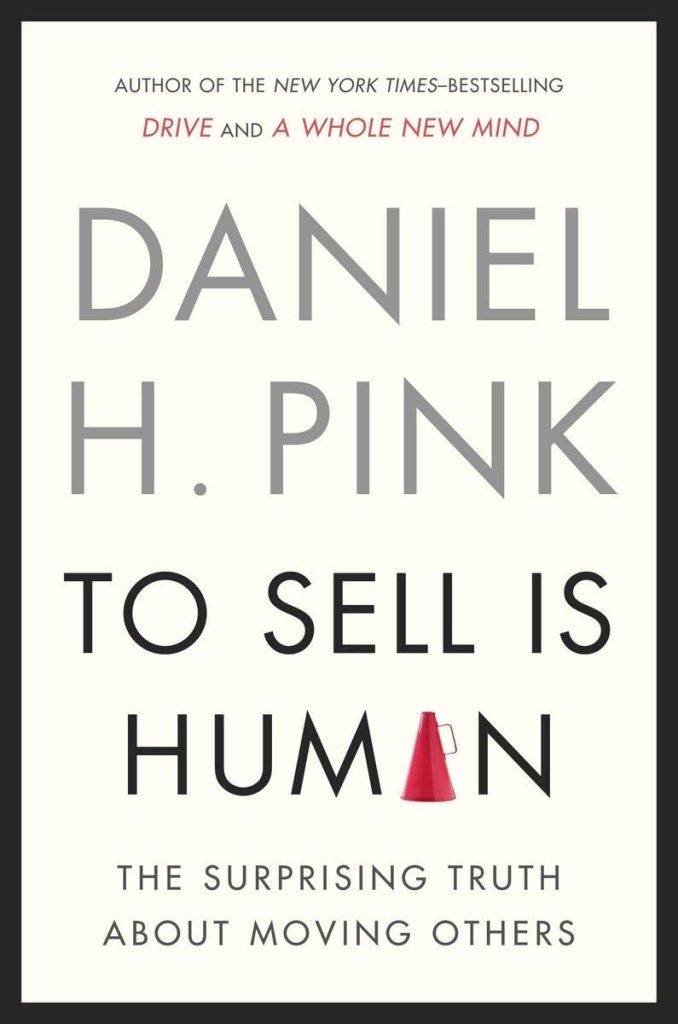
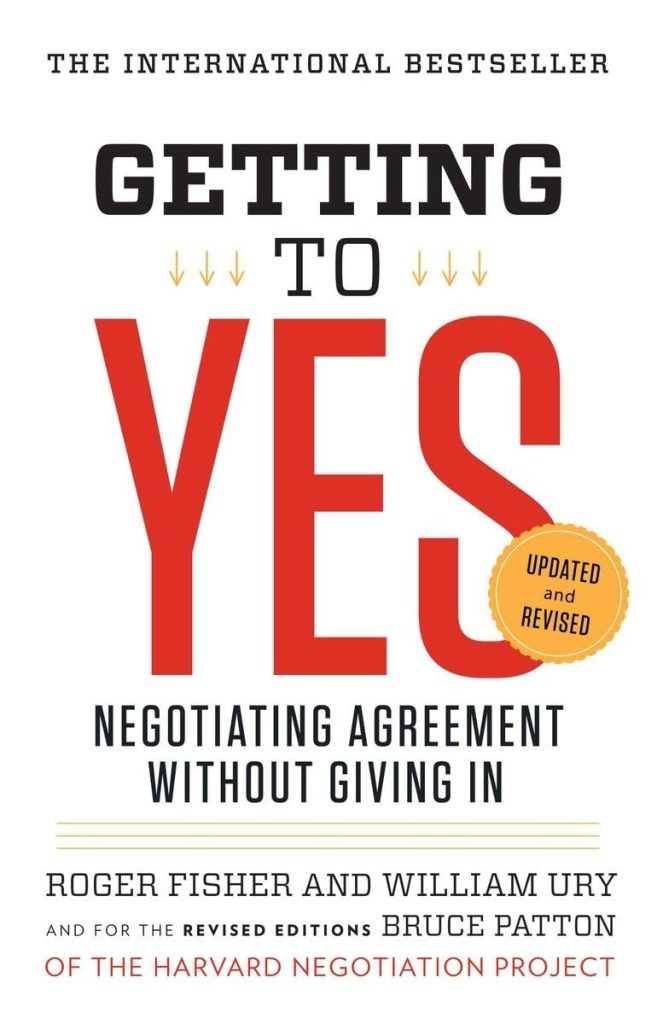
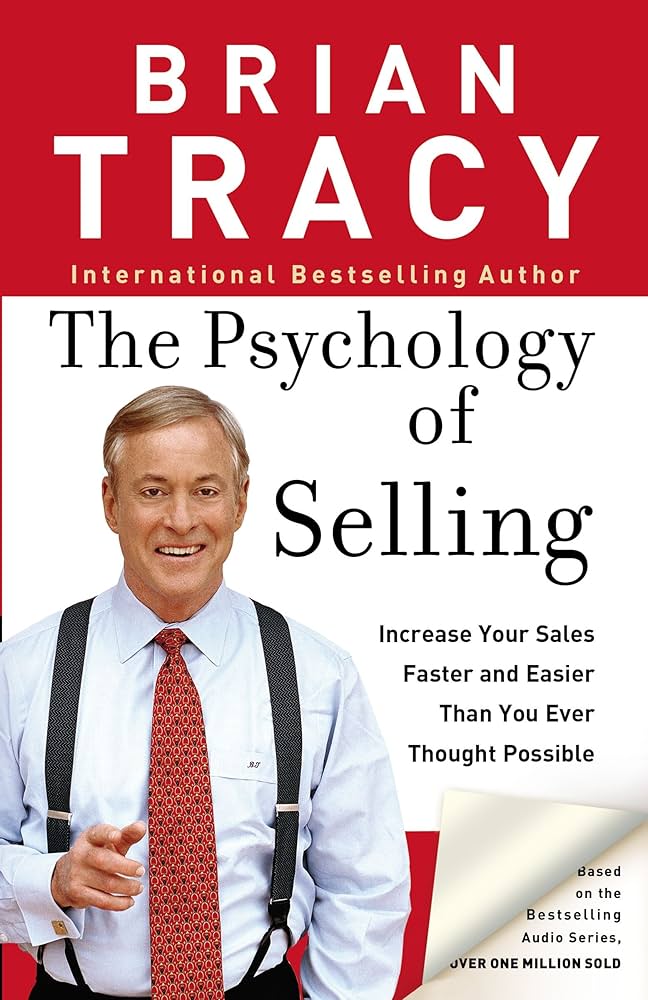
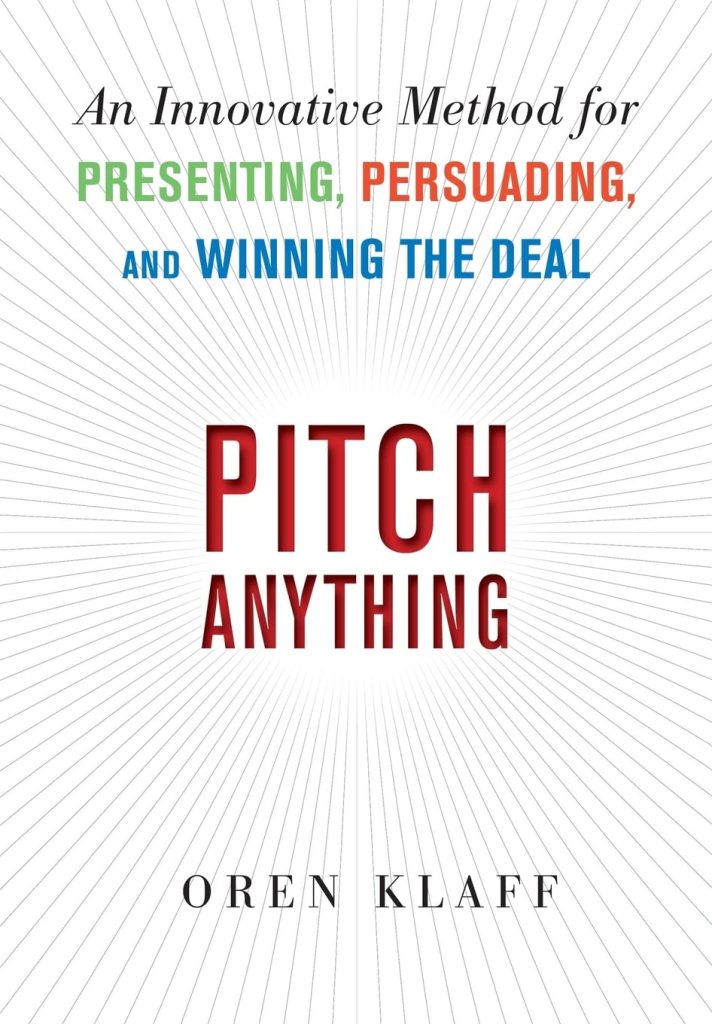

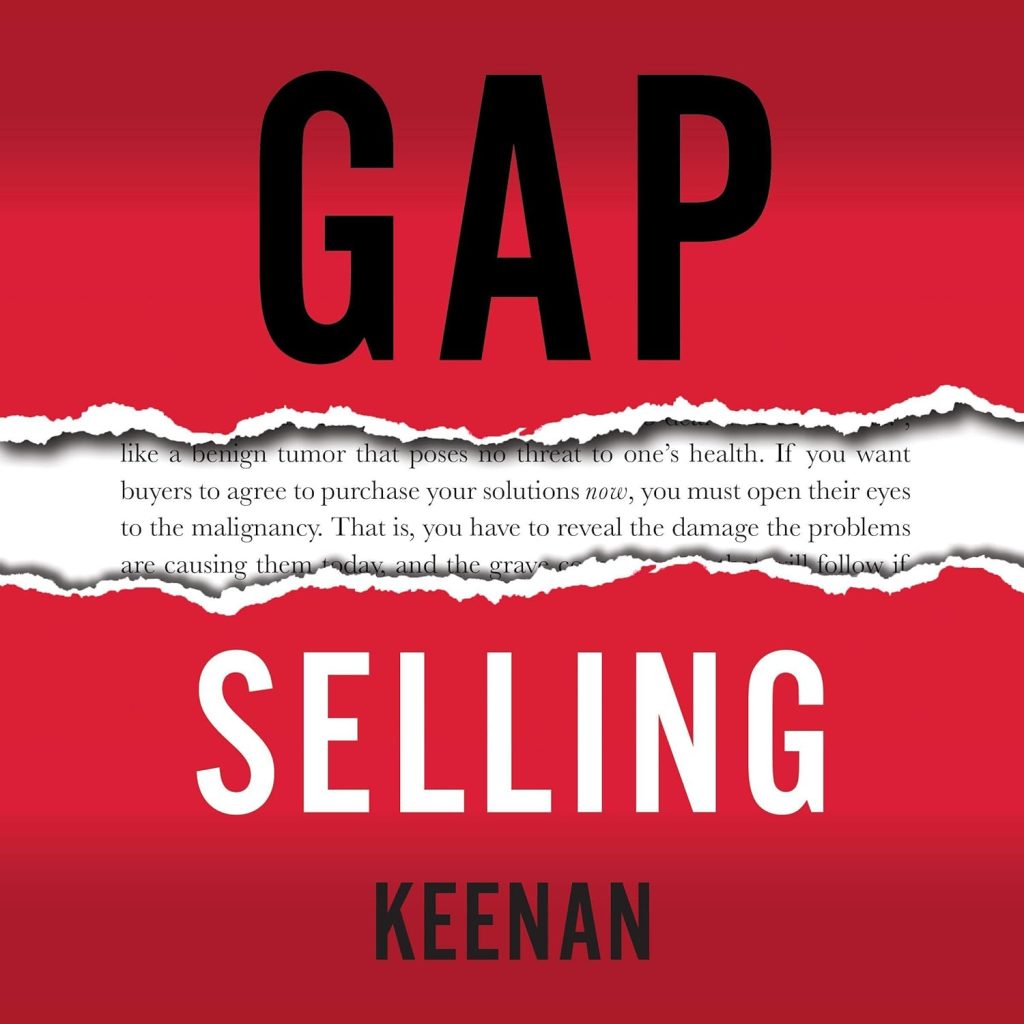
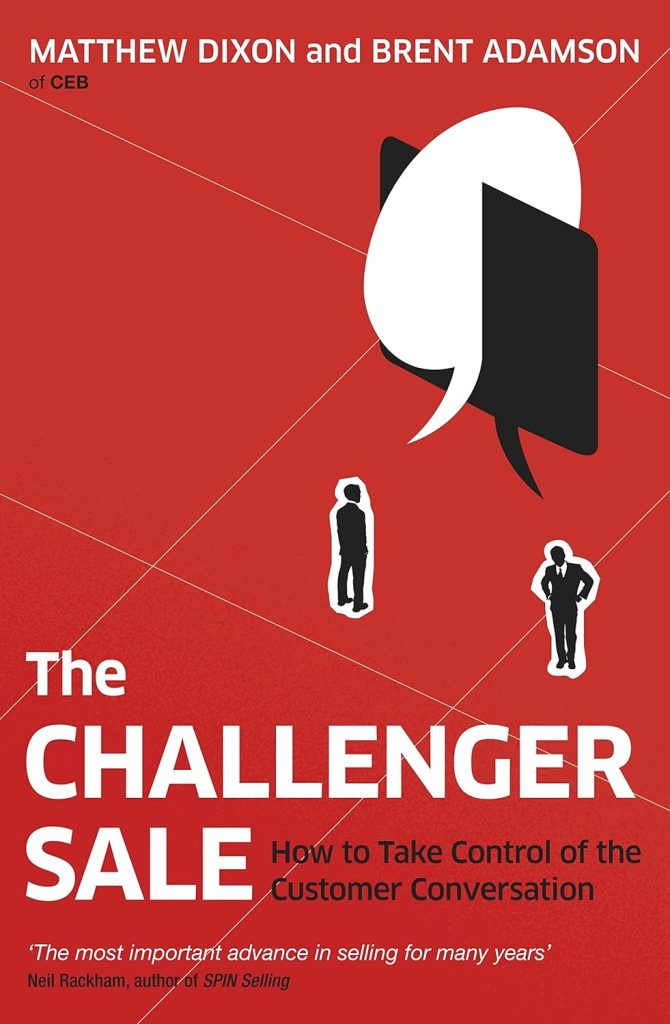

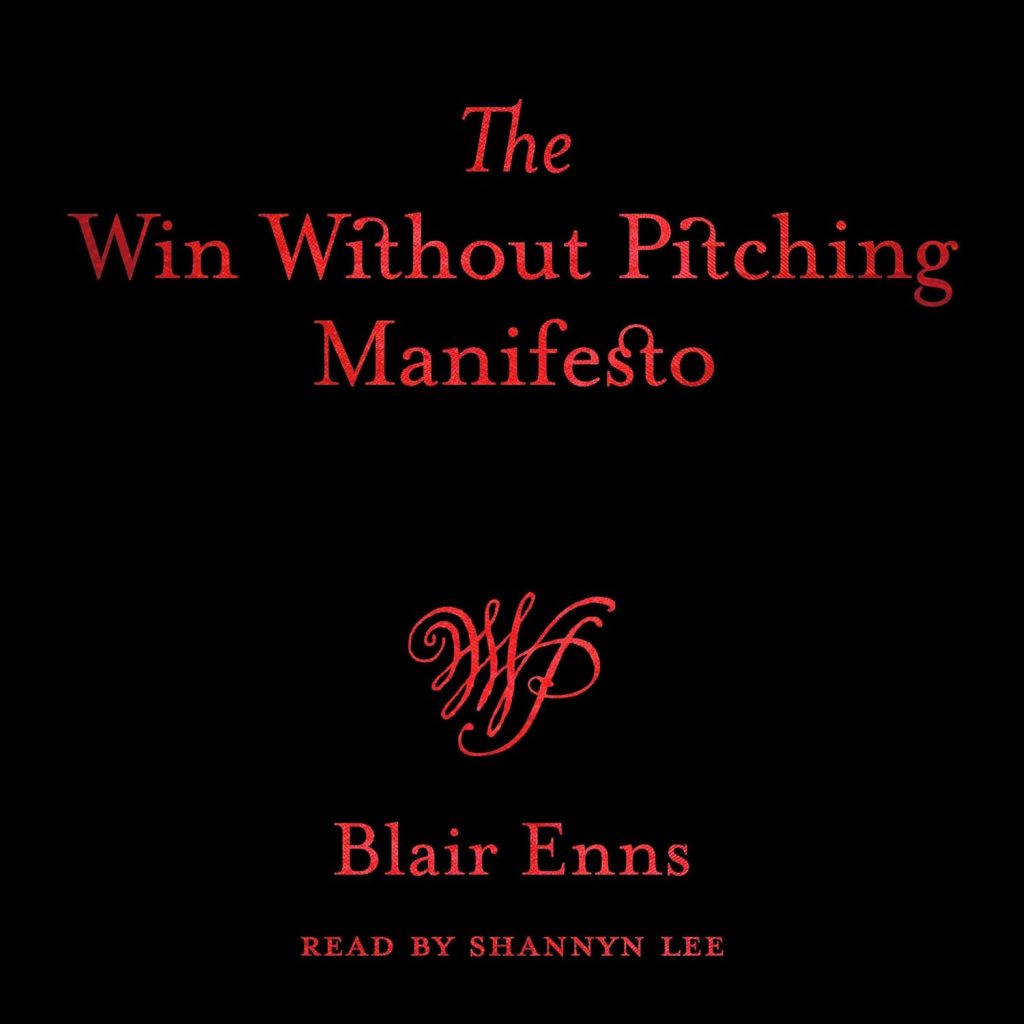
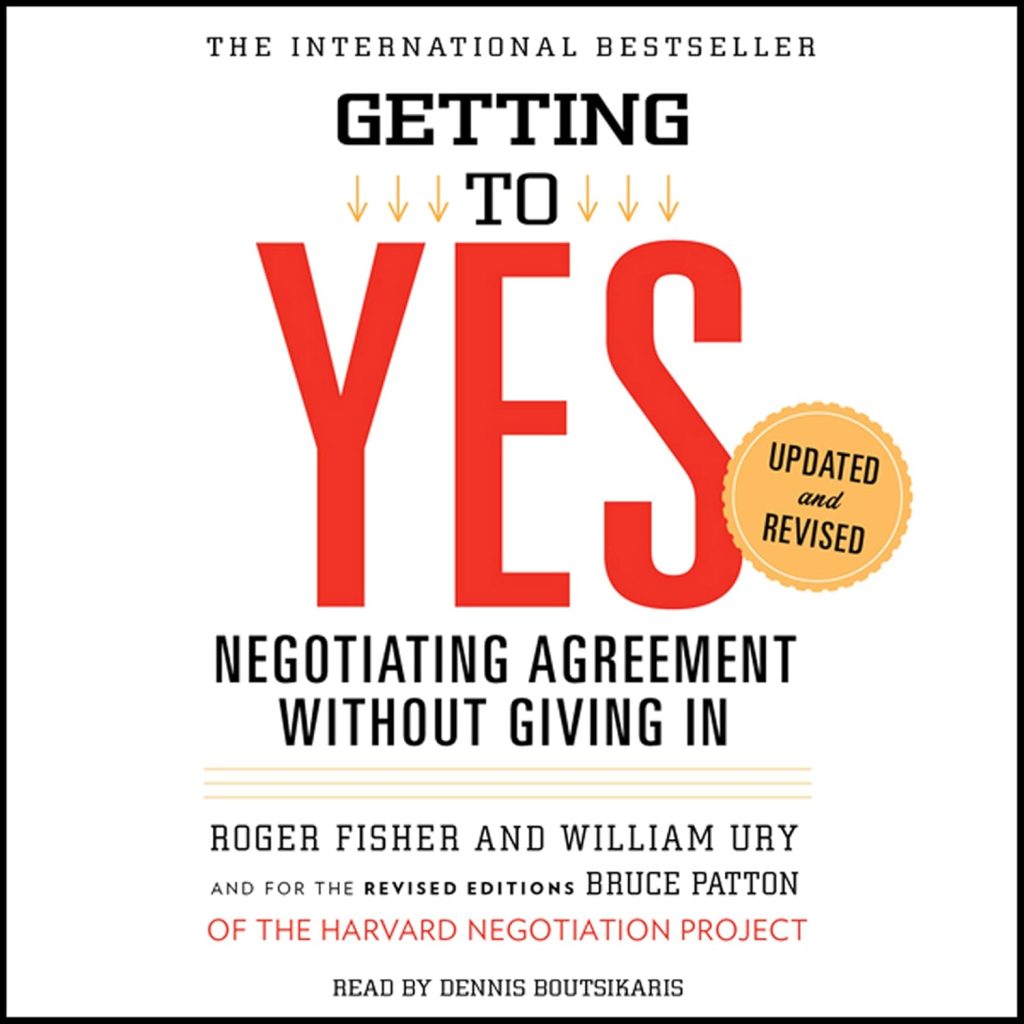


![Invoice Home Review – Is It Worth It For Freelance Writers [2023]](https://mightyfreelancer.com/wp-content/uploads/2023/06/invoice-home-review-768x512.jpg)
![Moxie App Review – The Best All-In-One Platform For Freelancers? [2024]](https://mightyfreelancer.com/wp-content/uploads/2024/01/DALL·E-2024-01-21-10.58.57-A-sketch-of-a-freelancer-working-at-a-home-office-with-a-computer-screen-displaying-the-Moxie-app-interface-symbolizing-the-integration-of-technology-768x439.png)

![How To Become A Copywriter [2023 Guide]](https://mightyfreelancer.com/wp-content/uploads/2021/05/nick-morrison-FHnnjk1Yj7Y-unsplash-768x576.jpg)